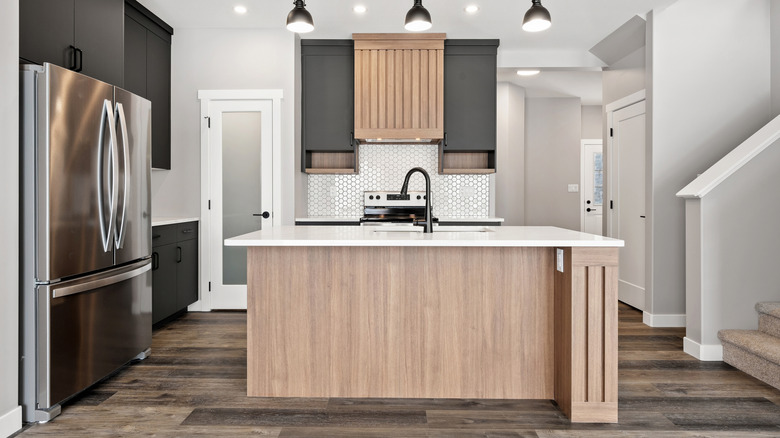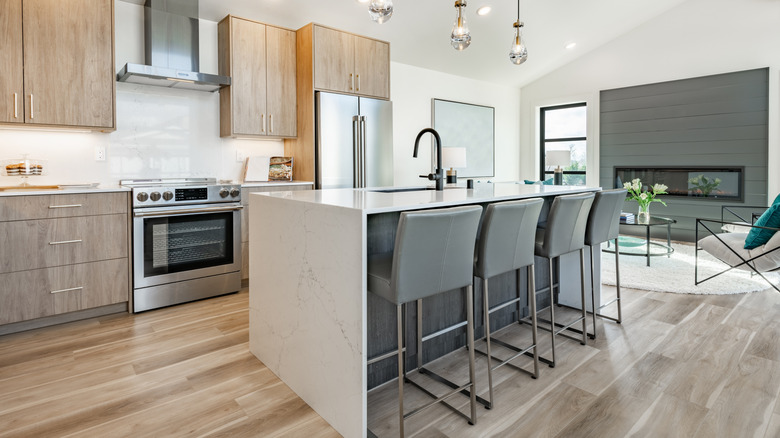The Kitchen Island Design Mistake That Could Ruin Your Next Party
You've spent time and money designing the perfect kitchen, and you're ready to start hosting. But tragedy strikes (kind of) — your guests are sitting around your trendy kitchen island, and it looks like a rollercoaster because everyone is at different heights. As you shop around for chairs, the height of your work surface will indicate the height of the chairs needed.
When possible, choose chairs that have adjustable height settings, especially if you tend to have friends and family with kids coming over. It's more comfortable for everyone to see eye to eye around an eating space. If you are set on the sleek look of non-adjustable chairs, here are the numbers to consider: The taller kitchen islands top out at around 43 to 47 inches, so your highest seating options will range between 33and 36 inches. More standard sizes include counter-height islands of around 35 to 37 inches(averaging at 36 inches) and bar-height islands of 41 to 43 inches (averaging at 42 inches). For counter-height worktops, aim for seats between 23 and 28 inches, while bar-heights better suit chairs between 29 and 32 inches. Conventional wisdom also dictates that each person should be allotted a foot of legroom and two feet of surface space, so as not to feel cramped.
Ways to maximize your kitchen island
This space acts as both a work area, eating and hosting core, and a display area. It can be the thing that ties your whole room together. So, it's important to make the most of it, be it functionally or aesthetically (or, ideally, both). First off, identify any shortcomings in your kitchen that you want to fill or correct. If you need more storage space, consider drawers or cupboards in the island. These might not be so comfortable to access, especially with seats around the perimeter, but you can use this space for seasonal items, décor, and other extras that need a home, just not prime real estate. Another storage idea is for vegetables that do better in the dark. Included in this are onions and garlic, or larger produce like butternut squash or that big bag of sweet potatoes you carefully chose.
As far as aesthetics go, there are some dos and don'ts to keep in mind. A big no-no is displaying hard-to-move décor, be it too heavy or too fragile. Instead, opt for transportable visual displays that will lend themselves well to being swapped out and stored away. Fruit baskets or displays of fresh herbs are the perfect way to stylishly keep inventory. If your island doubles as your main eating area, placemats can serve as a decorative mainstay that will be used daily. Be sure to choose colors and patterns that complement the color and texture of your island, which will create a seamless scene, as opposed to a mish-mash that can topple the whole look and feel of the kitchen that you worked so hard on.


